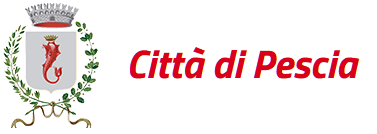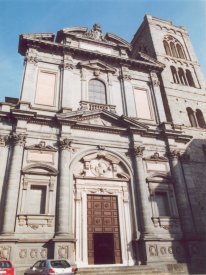
La storia
La città di Pescia ha antiche origini medievali; divisa dal fiume, è nettamente contraddistinta da due settori urbani: quello della Cattedrale e quello del Palazzo Comunale, ove si colloca la grande piazza.
Antichi palazzi ed eleganti chiese caratterizzano il centro storico che, nonostante abbia subito notevoli interventi, possiede ancora la sua forma originaria.
Ad est si trova il nucleo urbano di forma circolare che prese origine dalla Pieve di S. Maria, oggi Cattedrale; ad ovest invece si sviluppa con un singolare disegno urbano longitudinale il nucleo della civitas, con appunto la piazza ed i palazzi delle rappresentanze comunali; quest'ultimo ebbe origine dal castello di Pescia che in età medievale era sotto la giurisdizione del Vescovo di Lucca.
Il Ponte del Duomo unisce questi due poli così nettamente divisi, quello religioso e quello civile.
Pescia, proprio per il suo assetto urbano e per la sua storia ricca di avvenimenti, è da tempo immemorabile considerata il capoluogo della Valdinievole.
Ricca di testimonianze documentarie ed artistiche, Pescia appare ancora oggi un luogo affascinante dove si possono trascorrere giorni tra i verdi colli circostanti e le caratteristiche strade che raccontano una tradizione e una storia plurisecolare.





- La Cattedrale
Le prime immagini di Pescia risalgono al Quattrocento e mettono in risalto le due postazioni (castello-pieve) e le colline ripide che la circondano e scendono proprio verso il fiume.
Nel 1339 il castello di Pescia, dopo una storia plurisecolare sotto il dominio lucchese, passò sotto Firenze.
Il 6 febbraio 1339 i fiorentini entrarono in Pescia e da quel momento la comunità seguì le sorti del governo del "giglio".
Le grandi strutture chiesastiche, pur avendo quasi tutte una fondazione medievale, hanno subito forti rimaneggiamenti architettonici e decorativi nel Sei-Settecento.
Nel XVII secolo, infatti, Pescia conobbe la sua stagione artistica e politica migliore; la comunità iniziò ad avere un assetto più cittadino; le piccole realtà istituzionali, che fino a quel momento avevano avuto un carattere più famigliare, iniziarono, per così dire, a diventare veri e propri servizi per la società locale.
Il Comune di Pescia si estende su una superficie territoriale di 79,14 Km2. I suoi centri di maggiore attrazione turistica sono i Castelli della Valleriana e il paese di Collodi che è famoso in tutto il mondo perché l'autore delle Avventure di Pinocchio volle chiamarsi con il nome di questo paese.
Oggi la città di Pescia è nota per la produzione florovivaistica e per il Mercato dei Fiori della Toscana.
Tratto da "Pescia dentro e fuori piazza" ideata e curata dal prof. Paolo Vitali - ed. ETS Pisa con alcune modifiche ed integrazioni.
The History
The town of Pescia has ancient medieval origins and is divided into two urban sectors by the homonymous river: the religious sector with the Cathedral and the civilian one with the imposing Palazzo Comunale and its large square.
The town-centre is rich in ancient buildings and elegant churches and, despite the numerous restoration works, it still preserves its original medieval beauty.
The circular-shaped religious sector is located on the east side of the river and it originated from S. Maria parish church, the present Cathedral. On the west side of the river, the civilian nucleus develops with a peculiar longitudinal urban design, the main square and local governmental institutions. The civilian sector developed around Pescia Castle that in Medieval times was under the jurisdiction of the Bishop of Lucca. The Duomo Bridge (Ponte del Duomo) connects the civilian and religious districts.
Since time immemorial, Pescia has been considered as the Valdinievole county town on account of its urban structure and its history rich in events.
Full of documentary and artistic evidence of its ancient history, Pescia is still a fascinating place where it is possible to spend a few days visiting the surrounding hills and walking along the town-centre streets to discover centuries-old traditions and history.
The first representations of Pescia date back to the XIV century and highlight the two landmarks of the settlement, the castle, the parish church and the surrounding hills.
In 1339, after a centuries-long history under Lucca's influence, Pescia Castle ended up under Florence rule. Indeed, on 6th March 1339, Florence occupied Pescia and from that moment onwards the town's fate was strictly linked to that of the so-called "fleur-de lis government".
Most of the churches in Pescia have medieval origins; however, in the XVII and XVIII centuries, many of them underwent significant changes, concerning both their architectural structure and their decorative apparatus.
In the XVII century, Pescia enjoyed a period of considerable cultural prosperity and political development that also led to innovations in local governance.
Pescia stretches on a territory of 79,14 Km². The most outstanding attractions in the surroundings of Pescia are the beautiful Medieval Castelli of Valleriana, together with the village of Collodi, hometown of the author of the Adventures of Pinocchio, the wooden boy puppet who came to life.
Today, the town of Pescia is known for horticulture, especially for its cultivated flowers and for being the main flower trading centre in central Italy.


